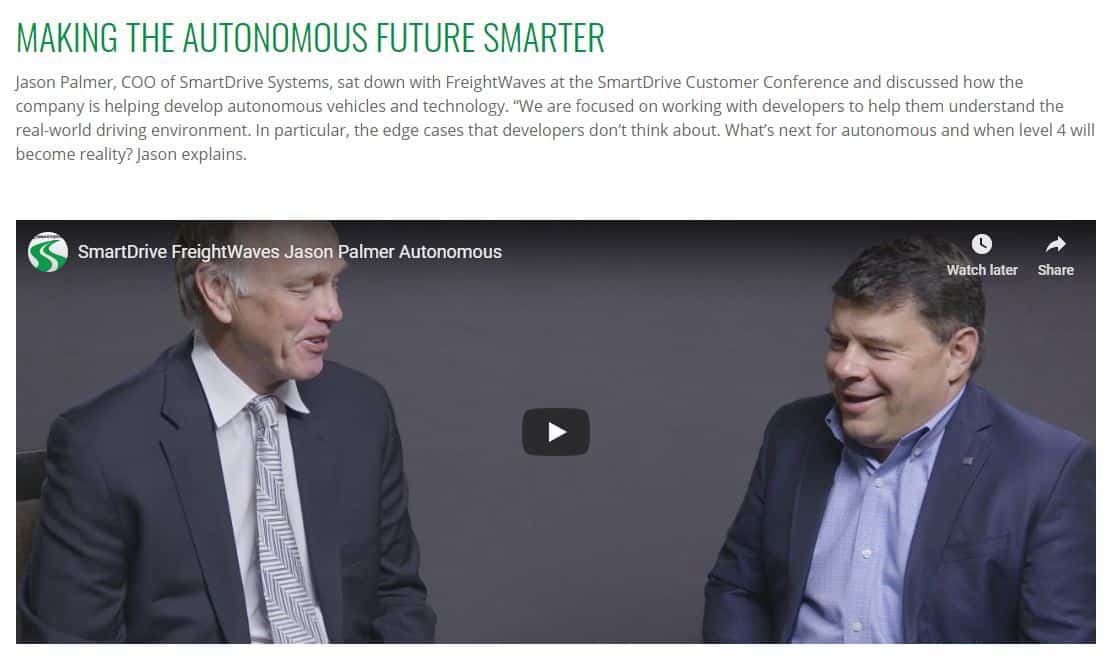
This is another in a series of videos produced by FreightWaves and SmartDrive, recorded at the recent SmartDrive Customer Conference in Atlanta. FreightWaves editor-at-large John Kingston discussed several key issues in trucking and transport today with both SmartDrive executives and several conference speakers.
“Where it comes to the unexpected” is where SmartDrive is targeting its role in helping develop autonomous vehicles and technology, according to Jason Palmer, SmartDrive COO.
In a video interview at the company’s Customer Conference in Atlanta, Palmer talked about what SmartDrive is doing to work alongside the companies that are seeking to develop the various stages in autonomous vehicle technology.
“We are really focused on working with developers to help them understand the realworld driving environment that is out there,” Palmer said in the interview. In particular, SmartDrive is focused on the “edge cases, the things that maybe they don’t think about.”
An edge case might involve showing an autonomous vehicle developer videos of an intersection that they will need to program for. “They start to go, wow, I never really thought about that and how my vehicle would deal with that,” Palmer said, describing the reaction developers have had.
“We kind of back up one step from that and we try to get them to understand which intersections are the most dangerous,” he said. “Where do we see the most near collisions?”

Developing those simulations is where “the unexpected” and SmartDrive’s capabilities come into play, Palmer said.
Anybody who talks about autonomous vehicles is asked about the timeline for their installation. Palmer said he would expect that OEMs in the 2021-2022 model year will be installing level 2 autonomous technology, “where they have assisted steering and adaptive cruise control, where it is taking over multiple functions in the vehicle.”
When the industry gets to level 4, which is much closer to a self-driving truck, Palmer still sees what he calls a “safety driver” in the vehicle at all times. “It will create the opportunity for the safety driver to do other tasks,” Palmer said. But at the same time, that driver will be expected to take over the vehicle on short notice, “so it is important that they are able to pick that up quickly,” he added.











